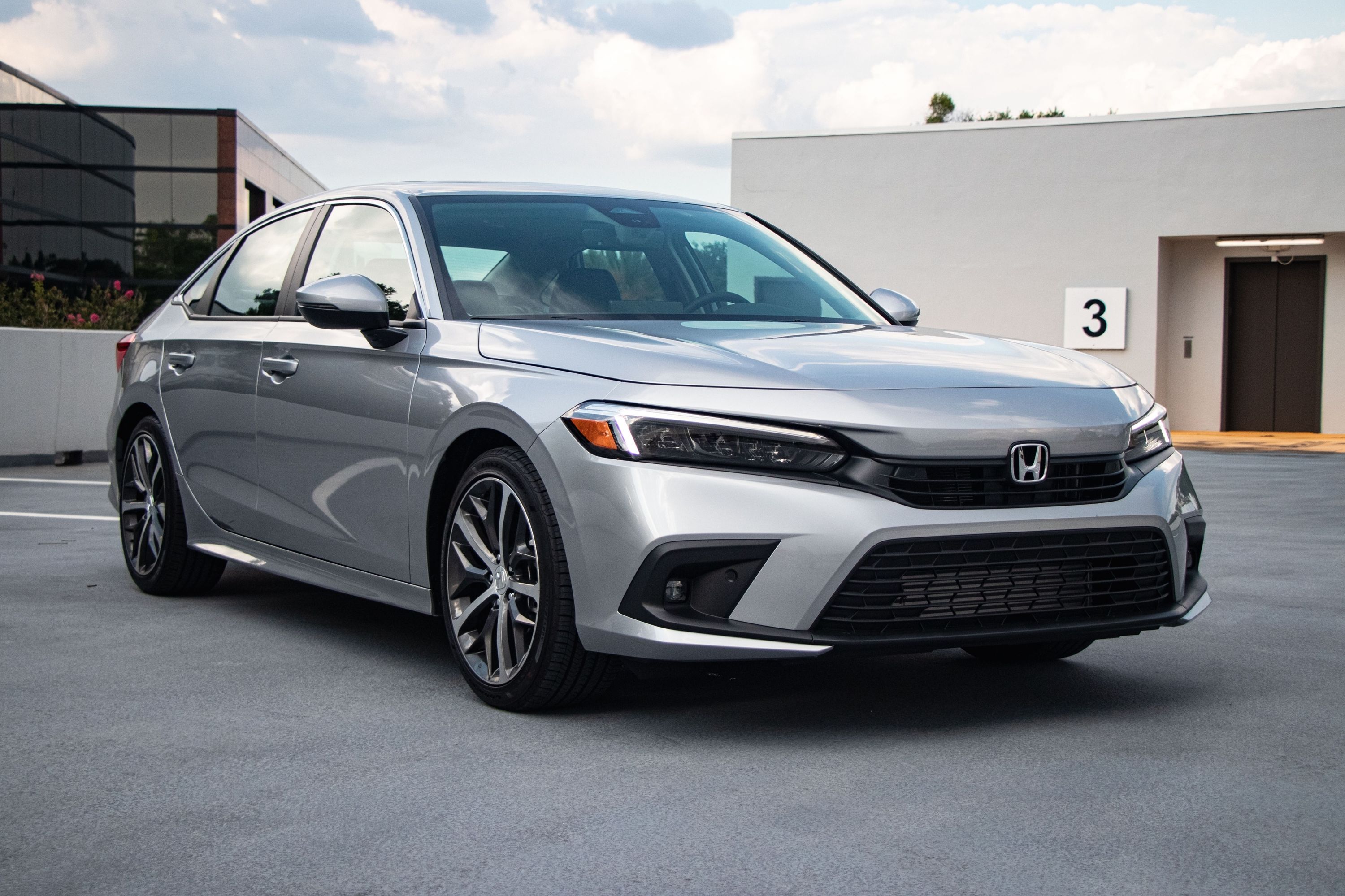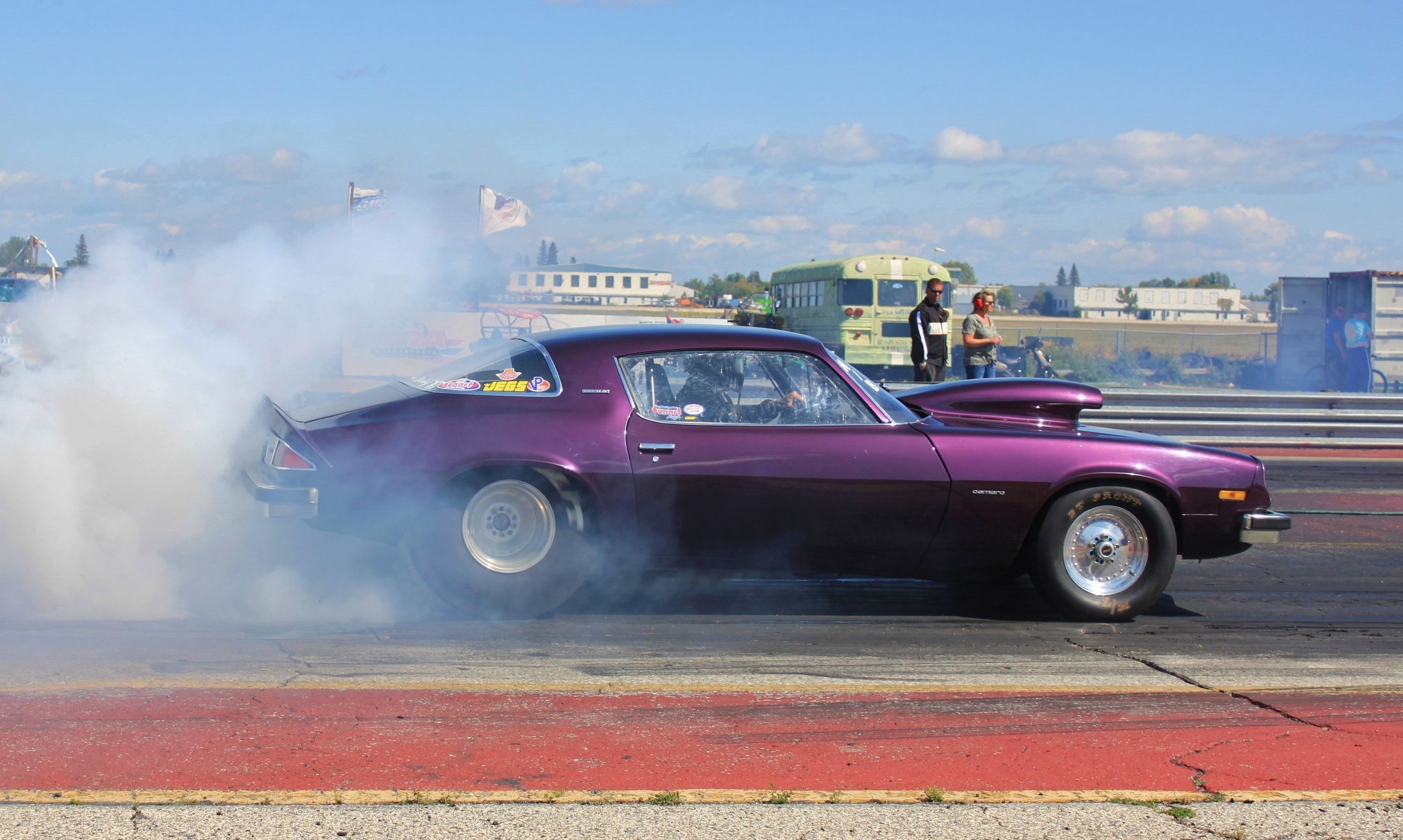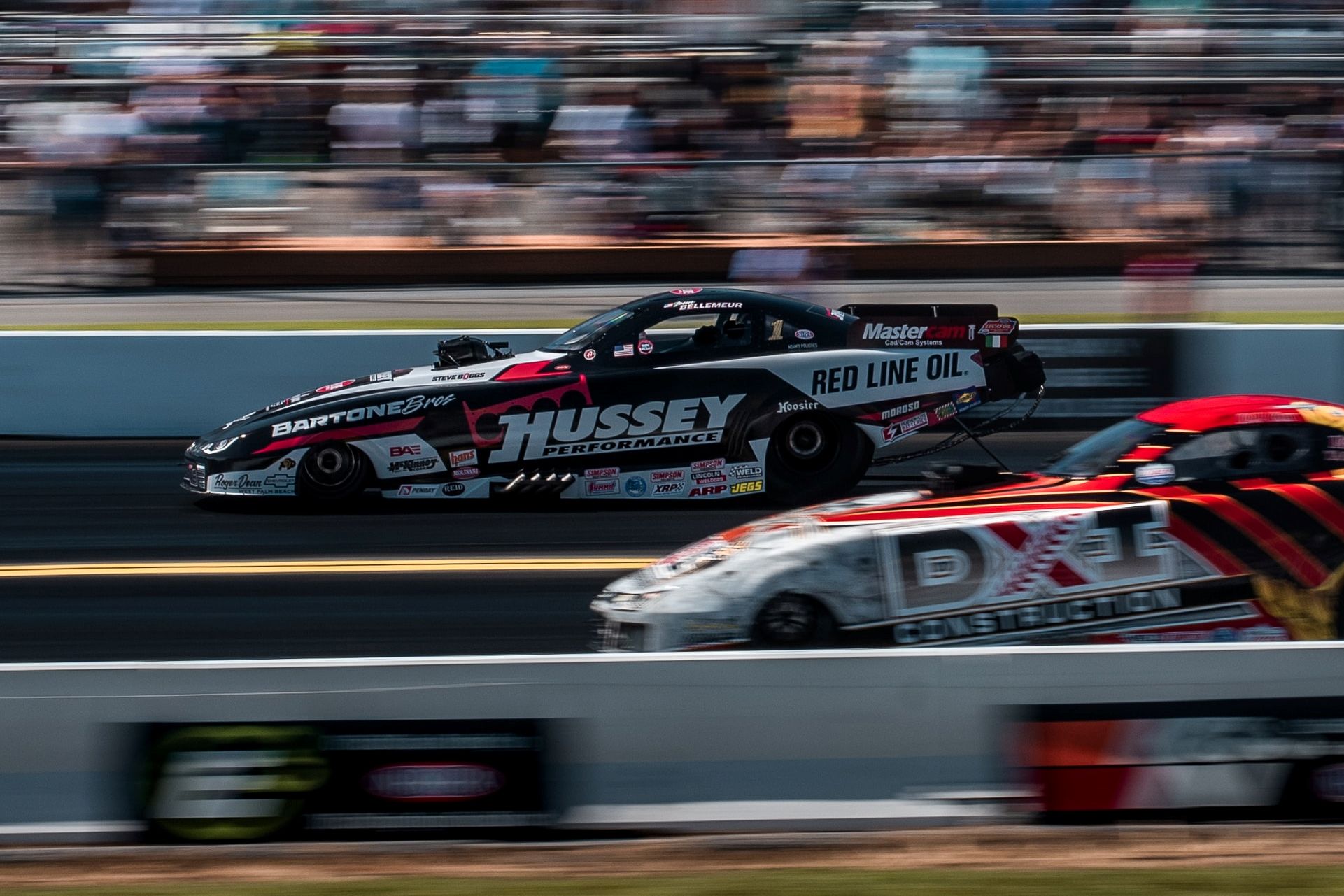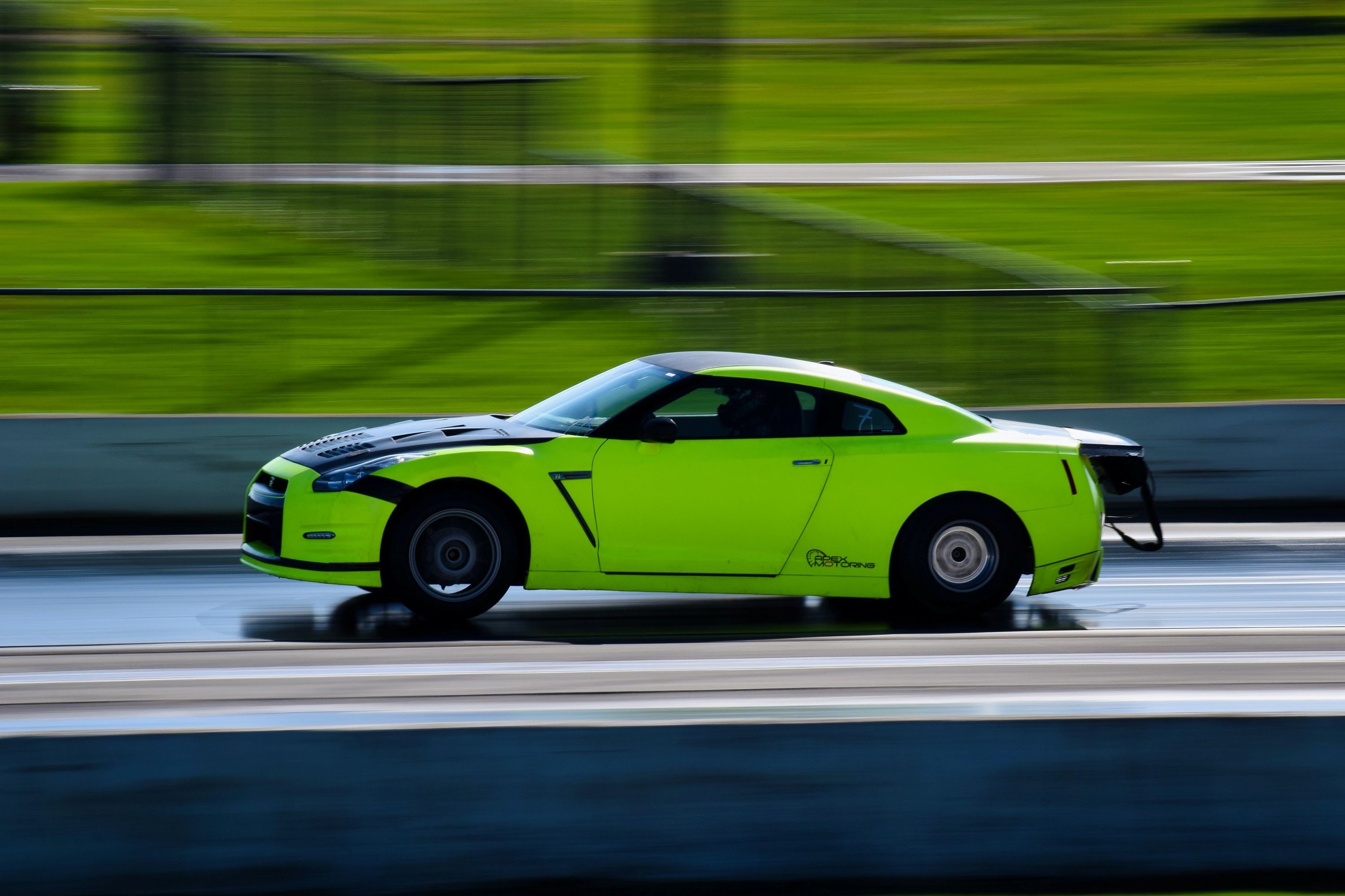
What is Drag Racing?
Drag racing is one of the most popular forms of motorsport around the globe, and despite seemingly straightforward rules and an even straighter track, this sport can get technical and expensive. The beauty of drag racing is that anything with wheels and an engine can compete; there is literally no limit on what you can race down the drag strip.
North America has one of the largest legal and illegal drag racing scenes globally and has a healthy number of drag race tracks in each state. As with any other form of motorsport, drag racing has its heroes, legends, famous tracks, classes, and rules. In this blog post we'll look at what drag racing is, and we'll take you through some of the basic rules around the sport, chat about the history of drag racing, and touch on some of the most famous drag racing cars and tracks in America.
History of Drag Racing
Drag racers have been challenging each other down the track for over 80 years. It all started after World War II when veterans of the war returned home, looking to match the rush of flying fighter planes and crushing Nazis in tanks and armored vehicles. These early competitors took to any straight piece of road surface available to them, including decommissioned aircraft bases. In 1950, C.J. Hart opened up the first drag race track, and in 1951 legendary drag racer Wally Parks formed the National Hot Rod Association (NHRA), which formalized the sport. Where the term "drag race" comes from is still up for debate and will differ from one "expert" to the next.
NHRA: Drag Racing Rules
The rules around drag racing will differ slightly between countries, but the NHRA mandated procedures and regulations have remained more or less the same over the past 70 years. The basic premise is simple - you line up against your rival and whoever crosses the finish line first is the winner. Some less time-focused events will also include the rule "Chase is a Race", which means that even if one car launches before the race is meant to start, the race is on if the other competitor chases after him/her. Here, whoever crosses the line first wins, but if one competitor doesn't chase after the car that jumped the start, then the stationary vehicle wins. This format is more popular in informal racing. The basics of NHRA rules can be broken down into the following categories.
Pre-Race Preparations
Before the drag racing cars line up for a race, each competitor is allowed to warm up his or her tires, in what is commonly referred to as a burnout. This improves traction off of the starting line. To get the tires spinning, cars usually pass through a water box, which is a patch of the track that has been hosed down with water to get tires spinning quickly. Many professionals will spray down a resin mixture known as TrackBite, which helps the tires not only break traction for the burnout but also adds a certain degree of stickiness and also can be used to seal cracks in the pavement.
Once the tires have been warmed up, the cars can approach the electronic starting system, also known as a 'Christmas tree' (those drag racing on the street will usually use hand signals or a torchlight). Current NHRA drag racing trees feature one blue light for each side, three amber, one green, and one red.
Staging
The next stage of a drag race is called "staging" and ensures that both vehicles are in line with each other and are given a fair start. Cars stage by crawling over light beam sensors with their front tires, which triggers the pre-stage indicator on the tree (cars are approximately 7 inches from the start line). When the cars make their way up to the final starting line, a second light beam is broken, which indicates that the cars are fully staged and ready to race. The electric starting system will give a short delay before setting the cars off. This delay is randomized to prevent drivers from predicting the lights. If a driver launches before the green light, a red light will appear, disqualifying the driver from the race. Different Christmas tree protocols are followed for different types of classes and races.
Measurements
Drag times aren't simply a measurement of who crosses the finish line in the least amount of time: there are many smaller measurements that go on behind the scenes that help dragsters improve their times. These measurements include reaction times, total elapsed time, and speed. 60 foot and ? mile measurements are also a good indication of a car's ability to put power down from launch. Special speed sensing systems are used to capture race results.
Bracket System
For most NHRA drag racing events, cars are seeded into brackets and are eventually eliminated as the event progresses. Cars tend to be placed in brackets according to their elapsed times in qualifying, and races can feature over 100 brackets.
Distances
The standard distance of a drag strip is 1,320 feet, which is equal to 402 meters, or a ¼ mile. The NHRA has shortened some of its races (notably for funny cars and top fuel contenders) to 1,000 feet due to safety concerns. Some tracks also hold ? mile racing events for those that want to test their car's launching capabilities.
Classes
In the United States, there are many classes under which drag cars can fall, and these classes are ever-expanding as new types of vehicles, such as EVs, join the race. Below are some of the most popular classes currently competing.
- Top Fuel - This is the fastest class of drag race cars and can cross the finish line in less than four seconds at speeds of over 330 mph.
- Funny Car - These cars loosely resemble production-based vehicles and feature carbon-fiber bodies that flip open to reveal a completely custom chassis underneath. These cars usually run in the four-second bracket.
- Pro Stock - Also known as "doorslammers," these drag cars must maintain the look of a regular car, and their engines are limited to 500-cubic-inches in NHRA sanctioned races. This class usually competes in the mid-six-second range.
- Sport Compact - This is a widely popular class that allows compact and subcompact cars to race competitively. Popular models in this category include the legendary Honda Civic, but bigger and more expensive cars such as the Nissan 350Z and even A80 Generation Toyota Supra are becoming more popular.
- Super Street/Hot Rod - This class is designated for full-bodied cars. Engine and chassis modifications are unlimited, making this class exciting to watch.
Famous Drag Racing Cars
Throughout its rich history, the sport of Drag Racing has produced some wild and wonderful creations. Some would be considered death traps by today's standards, while others set the bar for generations to come. Here are a few of our favorite historic, classic drag racing cars.
- Army Top Fuel Dragster - Tony Schumacher's Army-branded Top Fuel drag car is a crowd favorite and has managed to set a quarter-mile time of 3.6 seconds at 336.5 mph.
- 1963 Chevrolet Impala Z-11 - These special edition drag-ready cars featured lightweight body panels, a stipped interior, and an upgraded 427 drag racing motor packing 450 horsepower. This car could cross the finish line in 11.2 seconds; about as fast as a Chevy C8 Corvette.
- 1968 Dodge Hemi Dart LO23 Super Stock - Chrysler produced only 80 of these hardcore Darts, which featured Race Hemi engines.
- Mike Finnegan's Blasphemi - This 1955 Chevy Gasser is an awesome take on the legendary gasser class of drag racing cars and regularly runs in the mid-eight-second bracket thanks to a 528-inch Hemi engine fitted with a Blower Shop 8-71 Supercharger.
Top American Tracks
America is home to hundreds of dedicated drag racing tracks, but a few stand out for their history, location, and crowd capacity. Here are ten of North America's best drag racing tracks.
- Englishtown, New Jersey
- Gainesville, Florida
- Bristol, Tennessee
- Maple Grove, Pennsylvania
- Bandimere Speedway, Colorado
- Sonoma, California
- zMAX Dragway, North Carolina
- Lucas Oil Raceway, Indianapolis
- The Strip at The Las Vegas Motor Speedway, Nevada
- Summit Motorsports Park, Ohio
Conclusion
Drag racing continues to be one of the most popular forms of motorsport in North America, and while illegal street racing continues to grow, governing bodies such as the NHRA, MMPSA, and IHRA are doing their best to keep the sport safe and regulated. The beauty of drag racing is that anyone can compete, and as long as two cars are equally matched, the racing ends up being highly entertaining.



